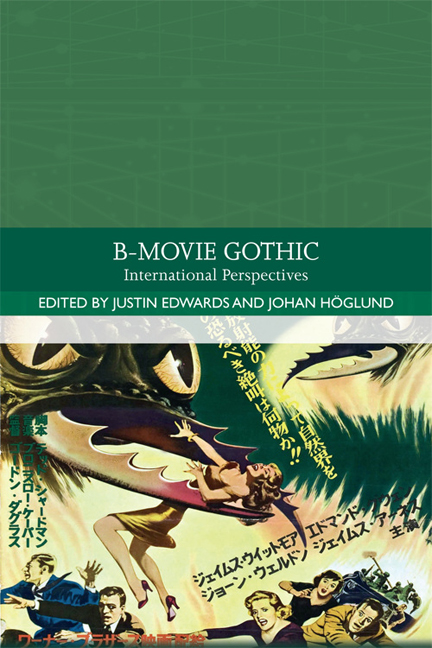4 - Gothic Forests and Mangroves: Ecological Disasters in Zombio and Mangue Negro
Published online by Cambridge University Press: 06 May 2021
Summary
The zombie holds a special place within Gothic culture, for it is not rooted in the literary tradition that includes Horace Walpole's The Castle of Otranto (1764), Mary Shelley's Frankenstein (1818) and Bram Stoker's Dracula (1897). The origins of zombies lie in religious practices that originated in Africa and found a syncretic expression in Haiti and Cuba, but also in places like New Orleans, Salvador-Bahia and Rio de Janeiro. These cultural manifestations are united by their common characteristics of incorporation, magic and sacrifice in the form of offerings made to the saints or orixás.
The zombie has moved slowly from Afro-Caribbean and Black American religious practices into cinema screens. Yet the cinematic representations of the zombie embody monstrous and spectral dimensions that tie them to a European literary Gothic tradition. The first zombie films produced in the 1930s and 1940s depict voodoo ceremonies, and zombies as bodies without minds, as well as figures who exist on the threshold between life and death. This early cinematic zombie is associated with voodoo and does not depict the graphic violence of the late twentieth-and twenty-first-century flesh-eating zombie. Victor Halperin's White Zombie (1932), Jean Yarbrough's King of the Zombies (1941) and Jacques Tourneur's I Walked with a Zombie (1943) are iconic examples from this early cinematic tradition, depicting zombies who shuffle across the set, often in somnambulistic trances. The decaying corpse hungry for human flesh is largely an innovation of George Romero's low-budget, black-and-white film Night of the Living Dead (1968) and, a decade later, films such as Lucio Fulci's Zombi 2 (1979) and Marino Girolami's Zombie Holocaust (1980), which consolidated the zombie in cinema by depicting gory scenes of cannibalism.
The late twentieth and early twenty-first centuries included the emergence of the zombie in new manifestations and forms: the zomromcom, the comic zombie, the zombie parody, the fast-moving zombie and the zombie virus. For instance, in Dan O’Bannon's The Return of the Living Dead (1985) a gas leak reanimates corpses into zombies who can talk and consume human brains; Danny Boyle's 28 Days Later (2002) and Paul W. S. Anderson's Resident Evil (2002) introduce fast-moving zombies (the latter based on the 1996 third-person shooter video game Biohazard/Resident Evil).
- Type
- Chapter
- Information
- B-Movie GothicInternational Perspectives, pp. 64 - 80Publisher: Edinburgh University PressPrint publication year: 2018

